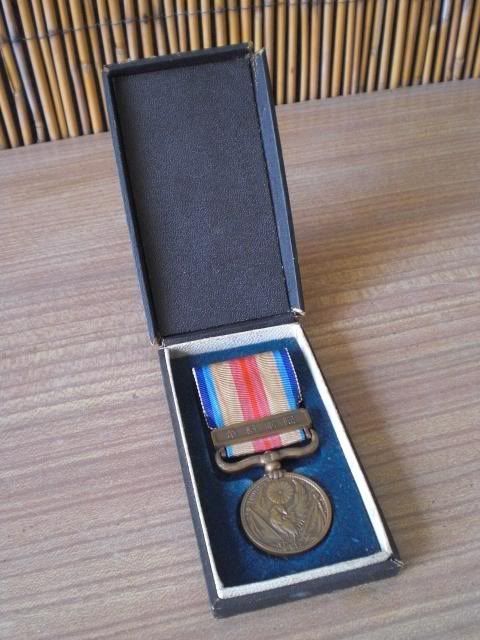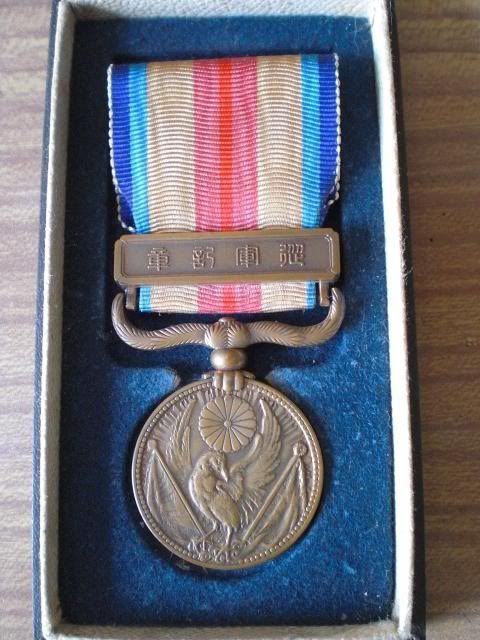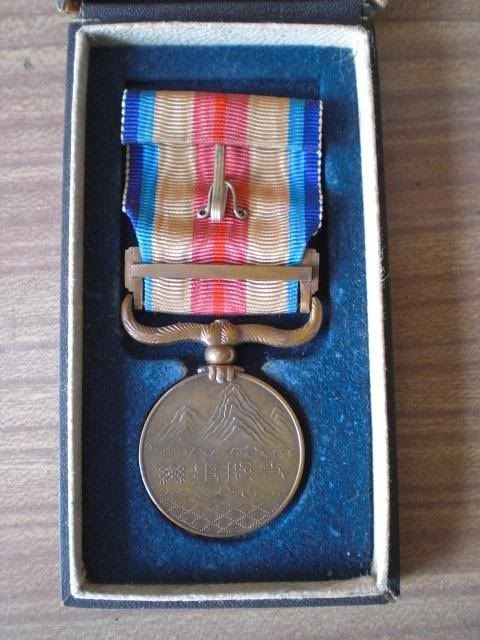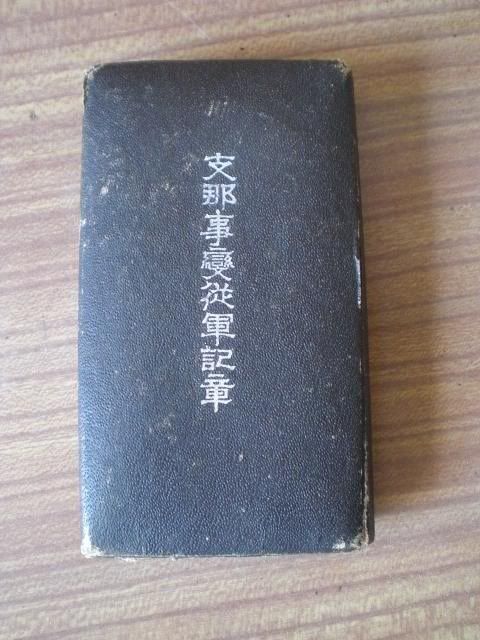Con el permiso de
Mencey, que es el que más sabe de esto, te copio lo quehe encontrado en una web que adjunto al final (en la web verás también la condecoración y la caja):
WWII Japanese Army China Incident War Medal This is a WWII Japanese China Incident Medal.
Creation date: July 27, 1939 (according to imperial Edict #496)
Amendments: 1944 (Edict #418)
Abolished: 1946 (Government ordinance #177)
An incident occurred at the Marco Polo bridge near Peiping on the 7th of July, 1937. This event triggered a series of actions that would culminate with the invasion of China by Japan. The cost in lives was measured in the hundreds of thousands. The "incident" ended with the eventual surrender of the Japanese forces in 1945.
The war medal was awarded to soldiers departing for service in China. It was issued clear until 1945. The medal was not to be awarded to soldiers who received the Great East Asia War Medal.
The construction of the medal consists of 30 mm bronze, with a swivel grip. The front of the medal depicts the "Yata-no-karasu" (mythical bird) on crossed Army and Navy flags. Complete with rays of light behind and the Chrysanthemum crest above.
The back of the medal portrays mountains, clouds and waves. The meaning behind this symbology is Northern China, Central China and the red Sea. The inscription reads "China Incident".
The "Yata-no-karasu" is a giant three legged mythical red crow which, according to legend, guided Jimmu Tenno's army through the mountains. In designing the medal, the decision was made to depict the bird with only two legs.
The ribbon is 37 mm wide, watered, with the following pattern and meaning:
1.3 mm of blue - The sea and the Navy
2.3 mm light blue - The sky and the Air Force
3.7.5 mm tan - The red Chinese soil, for the Army
4.3.5 mm dark pink - The blood staining the Chinese soil
5.2 mm bright red - Blood and loyalty
The ribbon bars were manufactured with the pink stripes changed to a maroon color. However, the ribbon was not worn with the medal.
The case is black pasteboard bearing the name of the medal in silver characters.
Esta es la página:
http://www.quanonline.com/military/mili ... cident.php
De todas formas he encotrado al menos otras dos medallas japonesas por incidentes en China:
- La
1931-34 China Incident War Medal , otorgada por la invasión de Manchuria en 1931.

- La
1942 China Incident War Medal , que no está claro pero parece haber sido otorgada por Japón a colaboracionistas chinos para conmemorar los incidentes acaecidos entre 1937 y 1945; se creó en el 42, pero al parecer casi todos los galardonados murieron al final de la guerra.















